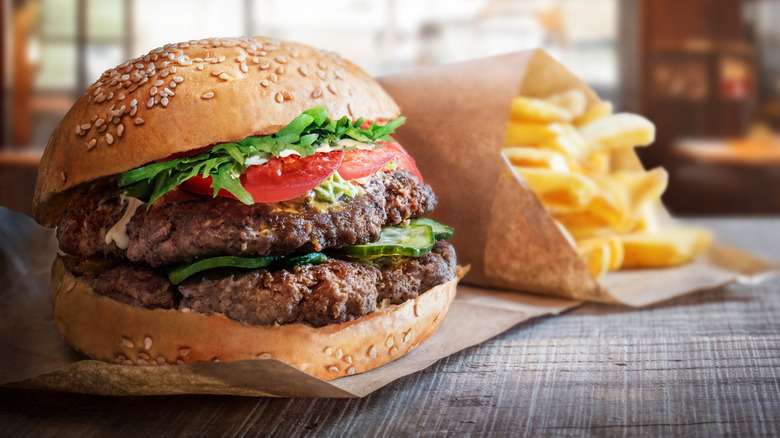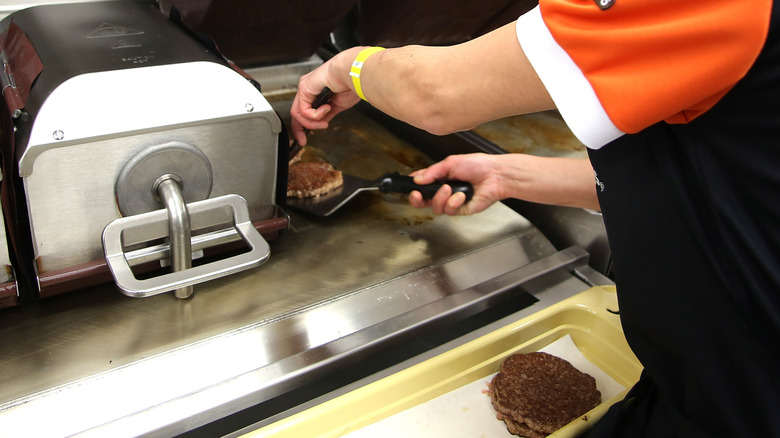The Key Differences Between McDonald's And Wendy's Beef Patties
McDonald's and Wendy's both have iconic burgers that they've sold for well over 50 years (McDonald's began in 1940, and Wendy's in 1969). Despite the former having a much larger footprint, with over 40,000 outlets around the world compared to just over 7,000 for Wendy's, both chains are large enough for their food to be comparable. And when we surveyed our ranking of every McDonalds burger to a similar ranking of every Wendy's burger, we found that the top spot in both lists was held by their respective OG burgers — the classic McDonald's hamburger and the Dave's Single from Wendy's.
The odd lettuce leaf or tomato slice aside, the heart of both these chains' best offerings is their burger patty. Given the significant time and resources put into them, it's surprising just how different the beef patties from McDonald's and Wendy's are. The former's patties are flash-frozen and obtained from multiple suppliers, who source their beef from cattle ranches all over the world in one of the most complicated global supply chains. Meanwhile, Wendy's square beef patties are never frozen and arrive at restaurants from relatively nearby processing plants in refrigerated trucks.
It's worth noting that McDonald's also has a non-frozen beef burger: the Quarter Pounder with Cheese. It's made with patties that are packaged separately from McDonald's regular beef patties and refrigerated instead of frozen. Both McDonald's and Wendy's season their 100% beef patties with only salt and pepper before adding them to buns and layering on the fixings. However, everything else is drastically different.
McDonald's beef patties are frozen, Wendy's beef patties are not
As one of the biggest beef buyers in the United States, McDonald's uses about half of all the beef produced by cattle-rearing businesses in the country. The meat for McDonald's patties also comes from hundreds of thousands of cattle ranches across over 100 countries through intermediate suppliers. This means that the meat in a single McDonald's burger can come from multiple cows that were possibly raised in different states or even countries. According to the fast food chain, their patties are made from USDA-inspected trimmings from beef cuts like the chuck, round, and sirloin. The patties are flash-frozen and then shipped to McDonald's outlets, and by the time they are consumed, can be up to 3 weeks old.
Since Wendy's patties are refrigerated and outlets are restocked multiple times a week, the source of the beef is usually much closer. In the U.S. and Canada, the beef used to make Wendy's beef patties comes exclusively from North America. Similarly, a Wendy's beef burger in New Zealand will constitute beef only from cattle reared in New Zealand. The fact that Wendy's patties are never frozen is something the company proudly (and loudly) proclaims. Wendy's also uses sea salt instead of regular processed salt, which helps set Wendy's fries apart from the crowd. Ultimately, considering the fact that the USDA stipulates that raw ground beef should only be refrigerated for up to 2 days, the beef patty at Wendy's is generally fresher than the one at McDonald's except for the Quarter Pounder, which is made fresh.

